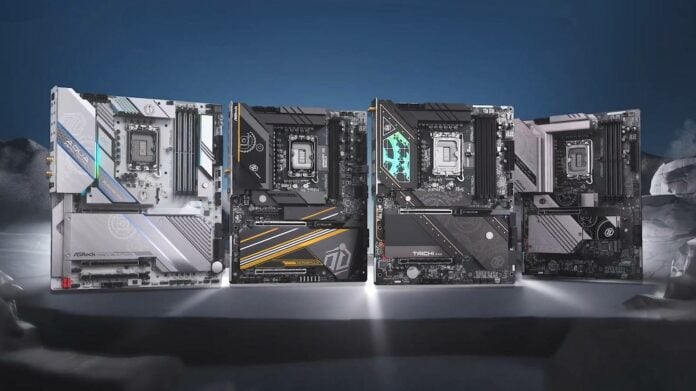ASRock has unveiled its complete Z890 motherboard lineup, ready for Intel’s Core Ultra 200 Series CPUs. There is something for everyone, from entry-level models to the fancy feature-rich flagship Taichi – including the model boasting 10 Type-C ports we saw during Computex.
To begin with, the brand is launching 18 models, mainly spread among the well-known Taichi, Nova, and Pro Series. These are:
- Z890 Taichi Aqua
- Z890 Taichi OCF
- Z890 Taichi
- Z890 Taichi Lite
- Z890 Steel Legend WiFi
- Z890 Pro RS WiFi White
- Z890 Pro RS WiFi
- Z890 Pro RS
- Z890 Pro-A WiFi
- Z890 Pro-A
- Z890 Nova WiFi
- Z890 LiveMixer WiFi
- Z890 Riptide WiFi
- Z890 Lightning WiFi
- Z890-CW
- Z890-C
- Z890M Riptide WiFi
- Z890I Nova WiFi
Taichi
Starting with ASRock’s unmistakable Taichi series, we have three ATX boards plus one E-ATX. All feature at least one Gen 5 PCIe x16 slot for graphics cards plus a Gen 5 M.2 slot for storage, with Aqua carrying two of each. Same for Thunderbolt 4, regardless of the model you choose, you get two ports. Though not a big deal for most users, note that ASRock didn’t opt for the newer and faster Thunderbolt 5.
When it comes to memory support, these boards can handle up to DDR5-9200, with the exception of Taichi OCF which blasts up to 10,133MHz. This higher result is partly due to its 10-layer PCB and dual-DIMM design which removes the interference caused by empty slots. That said, as you can guess, you can only pack 128GB of RAM because of this, unlike the other boards.
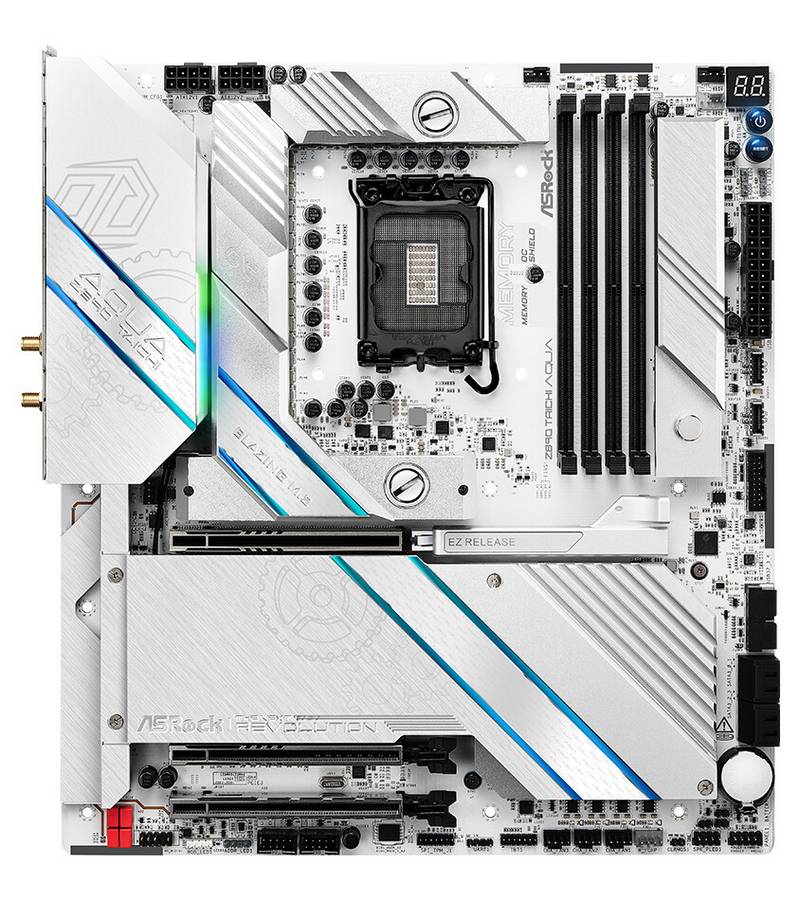
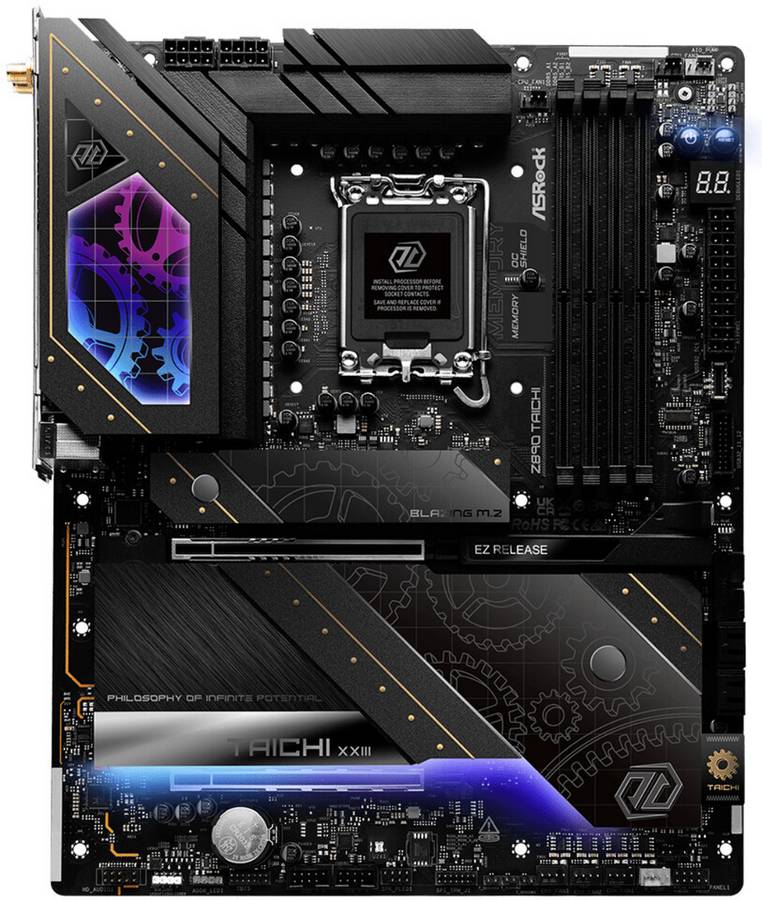
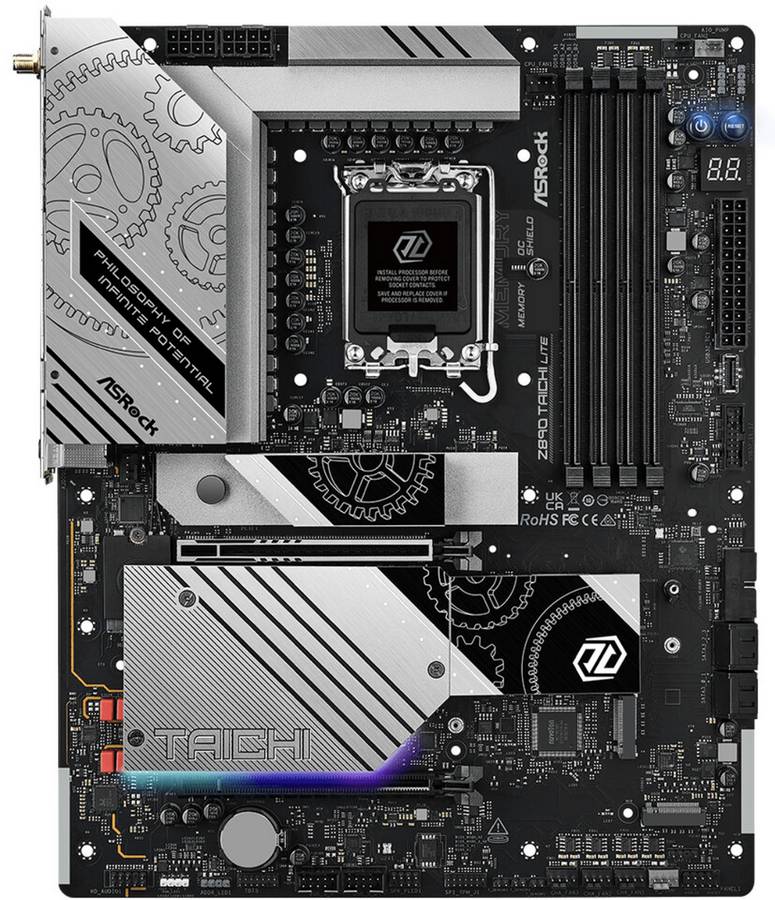
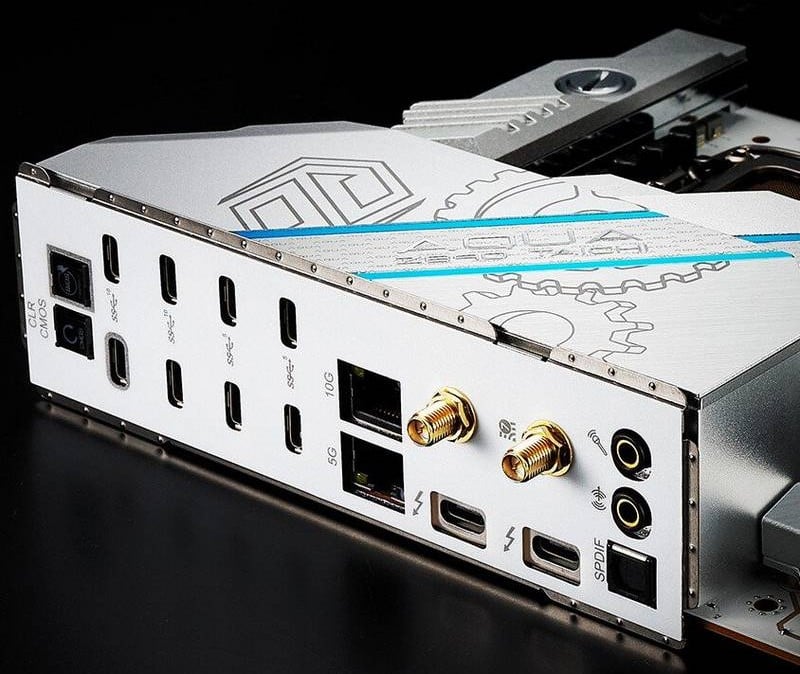
Moving to I/O we find, at least four USB 3.2 Gen 2 Type-A, 5GbE LAN, Wi-Fi 7 with 320MHz band support, Bluetooth 5.4, plus the aforementioned Thunderbolt ports which also support video output. While some house extra USB or 2.5Gbps LAN, the most notable is undoubtedly Aqua with its ten Type-C ports.
Style-wise, the series’ mechanical/gear sketches are present, giving a nice steampunk feel. Though I bet many will fall in love with the Aqua’s cleaner aesthetic. All in all, a great set of boards for those wanting the best ASRock has to offer.
Pro Series
Targeting mid-range buyers, the Pro family focuses on balance before all. Here, no extreme memory support or expensive liquid-cooled VRMs, just a good old slab of metal and DDR5-8666MHz will do the job. After all most users won’t go for the fastest RAM on the market anyway, if not due to cost, then CPU silicon lottery will. Besides, this frees up cash for more memory or a better graphics card.
All models come equipped with 16+1+1+1+1 power phases, four DIMM slots, and at least one Thunderbolt 4. For expansion, you get a Gen 5 PCIe x16 for graphics plus three x4/x1 slots, and four M.2 SSD slots – one being Gen 5.
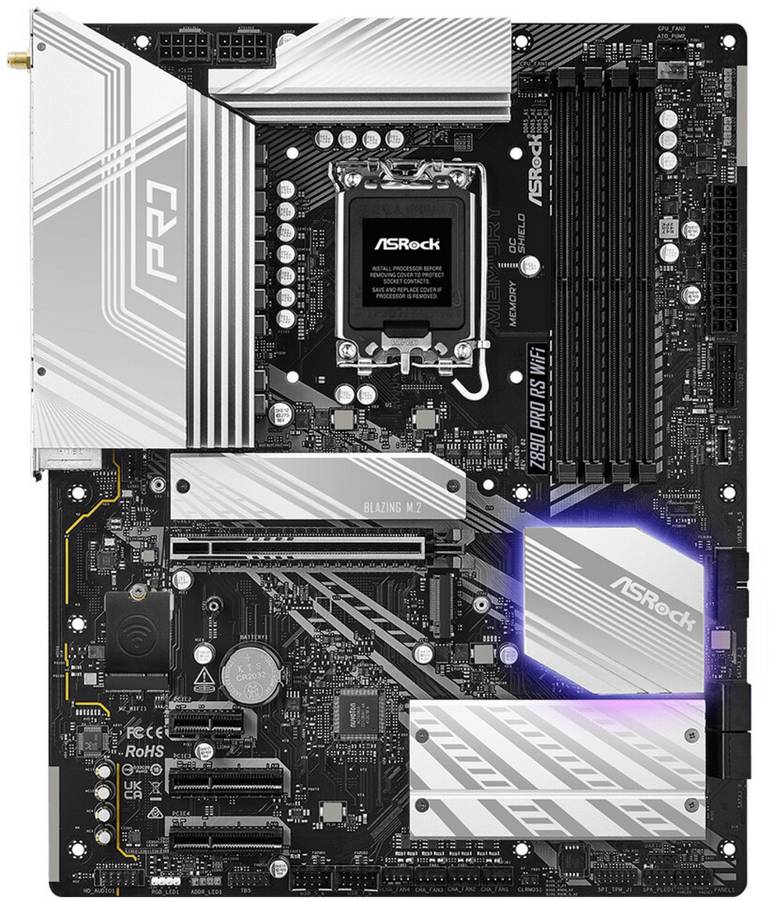
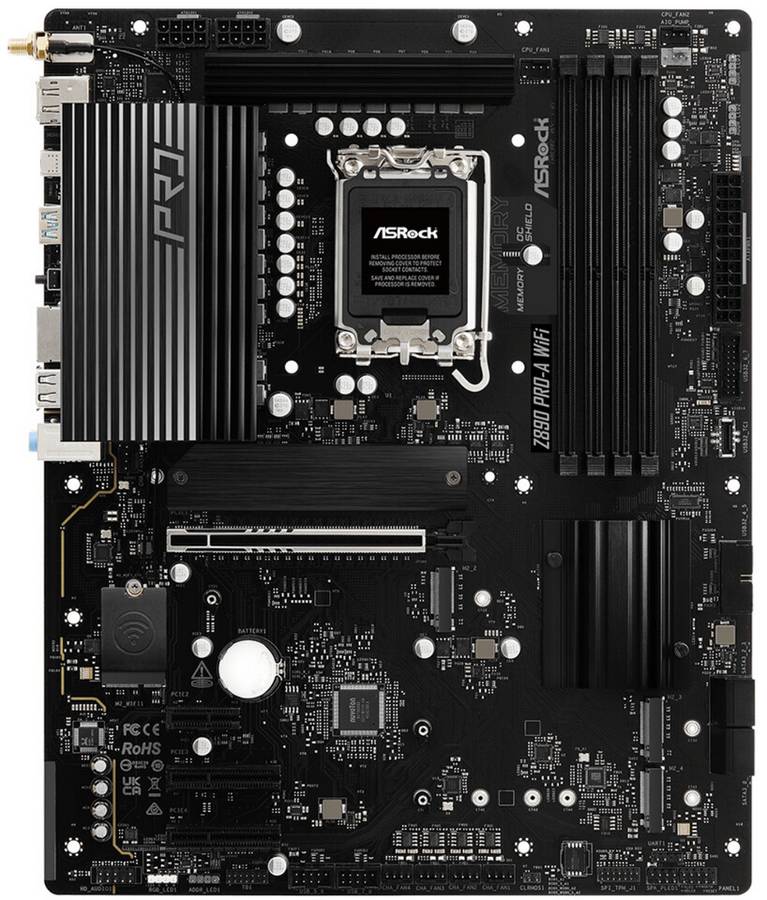
Switching to the side we encounter a good, though not exceptional, amount of ports. A couple of USB 3.2 here and there, a bunch of USB 2.0 for peripherals, Thunderbolt 4, video ports, 2.5Gbps LAN, and Wi-Fi 6E when applicable. There’s very little difference in core specs between each board, making any of them a solid choice. Let connectivity and style be your primary guides.
Talking of which, all Pro are largely bare PCBs aside from the parts that require cooling. They come in white/grey and black to suit your build, with a bit of RGB to top it all – but not on Pro-A.
Nova, Rptide, LiveMixer, etc..
Riptide and Lightning seem perfect for most gamers as they offer fast memory support, a modern I/O, and ample storage. We should also mention Z890M Riptide WiFi and Z890I Nova WiFi, representing the only ITX solution for those into compact PCs. Not to forget the all-rounder Steel Legend.
Lastly, Z890-C looks like the cheapest of the bunch, made for those who want Intel’s high-end chipset on a tight budget. I must sya, though, the new LiveMixer design doesn’t gel with my aesthetic preference. Where are the flashy colours of prior boards? At least the feature set is nice.
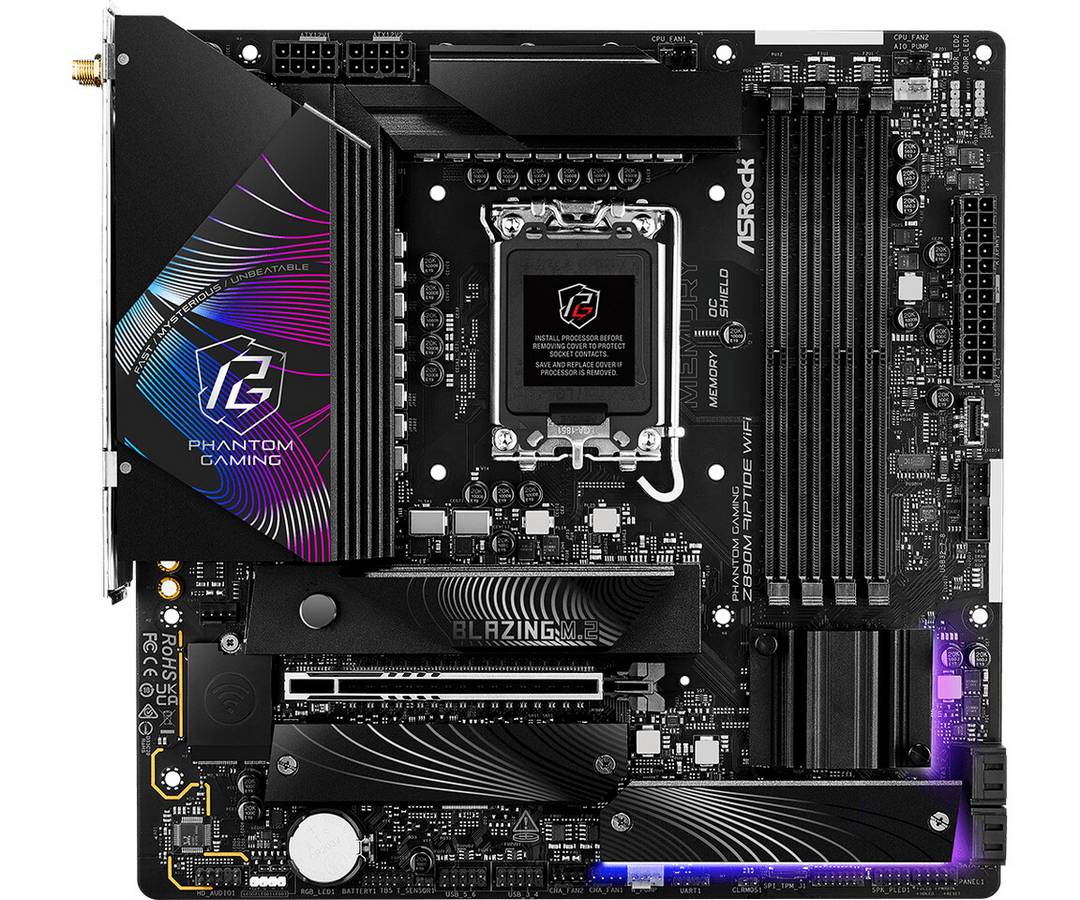
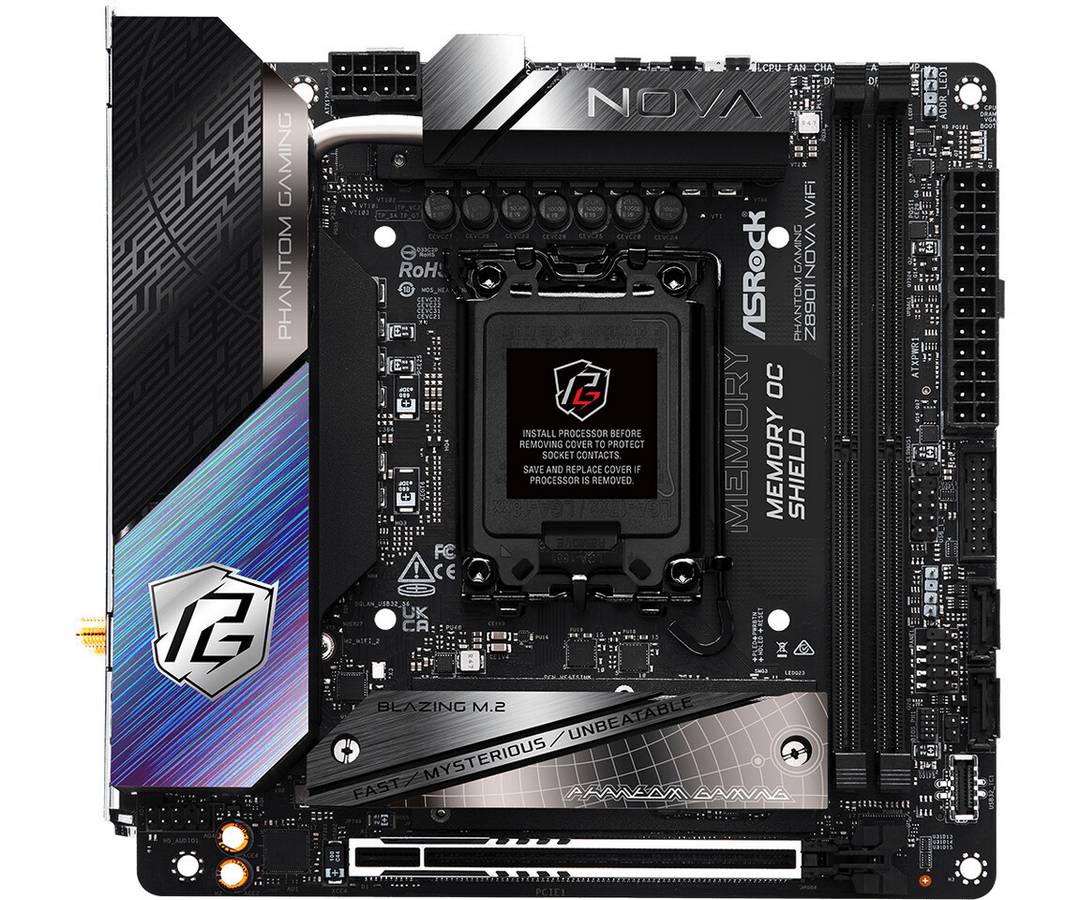
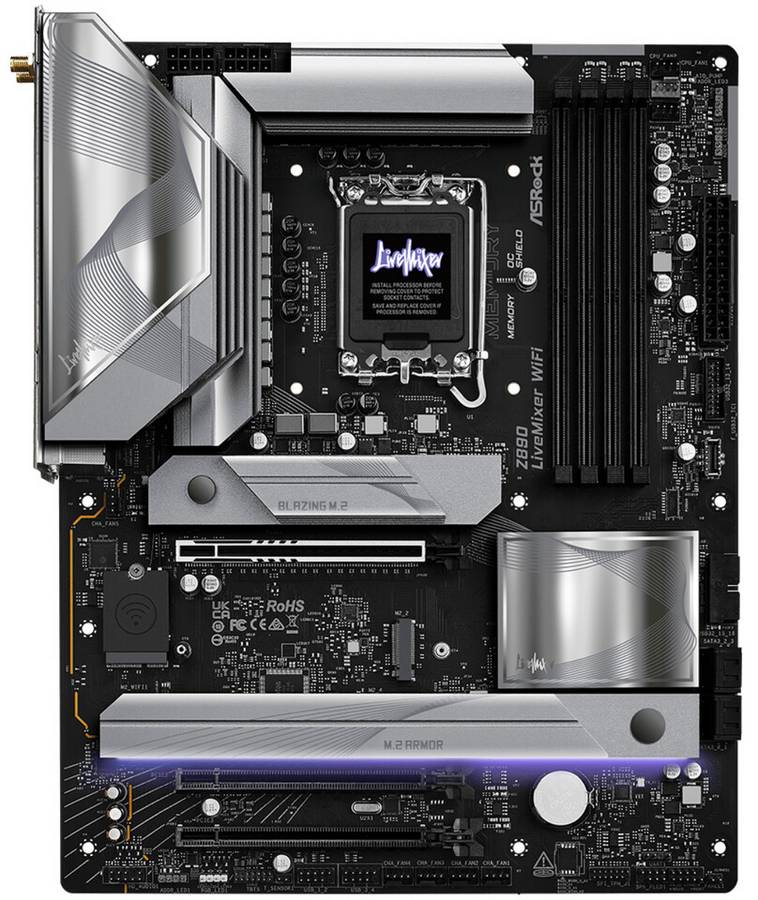
While ASRock didn’t include Thunderbolt 5, connectivity/expansion remains great, especially on the high-end. If you want a board ready for Intel’s Core Ultra 200 CPUs, be it for gaming using the fastest GPUs or for running memory-intensive work, any one of these should do the trick.
